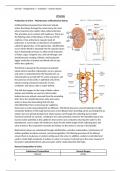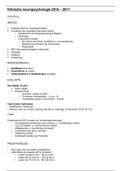Summary
Summary BTEC L3 NED Applied Science - Unit 20 - Learning Aim C
- Course
- Institution
Distinction attained, this assignment only contains the report, not the associated practicals, it gives detailed explanation of production of urine process(maintenance of biochemical values) urinalysis in case studies, with given diagnosis, risk of contamination, how errors can be reduced, correct ...
[Show more]












